Clancy Tucker's Blog, page 195
March 2, 2017
3 March 2017 - MARYLEE Mac DONALD - Guest Author
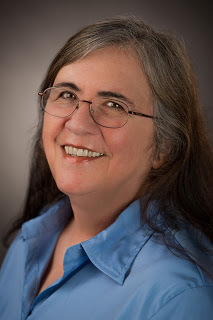
MARYLEE MacDONALD- Guest Author -
G'day folks,
I'm pleased to interview another award-winning author from the USA.Welcome, Marylee ...
1. TELL US A LITTLE ABOUT YOURSELF AND YOUR WRITING JOURNEY.
My hometown newspaper published a plotless story of mine when I was in fourth grade, so I guess you could say that’s when my journey to become a writer began. Like most journeys, mine has had a lot of speed bumps and detours, so it’s only now, at age 71, that I can truly say I feel like a writer.
2. WHEN AND HOW DID YOU BECOME A WRITER?
After my first husband was killed in a car accident and after the birth of our fifth child, I chose to return to school for a Master’s degree in Creative Writing. Totally impractical, from the standpoint of earning a living, but at the time, I thought I could teach writing and English at a junior college. I was 26 and probably not thinking straight. Clearly, the delusion of becoming a writer stuck with me, because here I am, answering your questions.
3. WHAT TYPE OF PREPARATION DO YOU DO FOR A MANUSCRIPT? DO YOU PLAN EVERYTHING FIRST OR JUST SHOOT FROM THE HIP?
Aha! Am I a planner or a “pantser”—meaning, “Do I write by the seat of my pants?” I’d like to be a planner. I do plan, and if I wrote thrillers or mysteries, probably I would be obliged to plan. Instead, I write a discovery draft, and after I finish my messy first draft, I root around for the most interesting parts. Alive, vivid scenes stay in. I look for one thing causing another, and then I impose a plot, usually by just working on paper until the storyline begins to shape up. On my blog I have a post that talks about a two-sentence way to get a grip on plot. Many writers have told me this method has helped them.
4. WHAT DO YOU ENJOY MOST ABOUT BEING A WRITER?
I enjoy the writing itself. I love to tinker around with sentences and make them beautiful. I never tire of living in imaginary worlds.
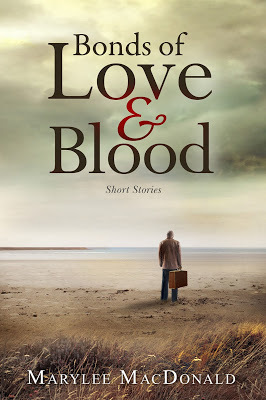
5. WHAT IS THE HARDEST THING ABOUT BEING A WRITER?
I hate marketing and promotion. Until 2014 when a small press in Maine published my novel, I’d never thought of having to learn the marketing piece of publishing. Now I know that having a presence on the internet is essential. Without that, no author can hope to find readers.
6. WHAT WERE YOU IN A PAST LIFE, BEFORE YOU BECAME A WRITER?
I’ve always been writing and sending out my work, but for my day job, I worked as a carpenter. I had an all women’s construction company in Urbana, Illinois, and my business partner and I trained other women in the trades. After a while I shifted more to the writing side and worked as an editor for various building trade magazines. I think I might be the only grandma out there who’s equally comfortable buckling on a tool belt and changing diapers.
7. WHAT IS YOUR GREATEST WRITING ACHIEVEMENT?
It was a great honor for me to win a Gold Medal for Drama from the Readers’ Favorites International Book Awards. That was for my novel, Montpelier Tomorrow, a book about a caregiver and her struggle to protect her family from Fate.
8. WHAT ARE YOU WORKING ON AT THE MOMENT?
I’m working on a novel set in 1769 during the Transit of Venus expeditions that brought Cook to the South Pacific and the astronomer, Chappe d’Auteroche to Baja California. The novel’s about the young artist who left Paris, hoping for a quick route to fame and fortune, and returned with his hopes dashed.
9. WHAT INSPIRES YOU?
Other writers inspire me. I love looking back through magazine archives to learn about the preoccupations and working methods of writers who’ve gone before me. Esquireand the New Yorker have some terrific stuff in their archives. I mine those for tips to make my job easier.
10. WHAT GENRE DO YOU WRITE?
Primarily, I write literary fiction, both novels and short stories.
11. DO YOU HAVE ANY TIPS FOR NEW WRITERS?
If you think you don’t have time to write, set a kitchen timer for 15 minutes. Use Scrivener, rather than Microsoft Word. Learning Scrivener takes time, but makes revision easier.
12. DO YOU SUFFER FROM WRITER’S BLOCK?
Never. I’ve waited so many years to have unencumbered time that writing is a complete pleasure.
13. DO YOU HAVE A PREFERRED WRITING SCHEDULE?
I start at 8 in the morning, after I’ve done the New York Times’ crossword puzzle. I write for an hour and then look at my other commitments for the day. If I can get in three or four hours of writing time, that’s a good day.
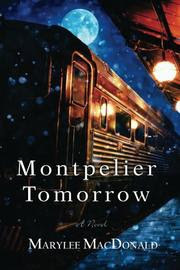
14. DO YOU HAVE A FAVOURITE WRITING PLACE?
I have a home office. It’s nice and quiet and has a good ergonomic setup. Occasionally, a writer friend and I will meet in a cafe for a “power write.”
15. WHAT IS YOUR GREATEST JOY IN WRITING?
It’s probably the day I see the book cover and realize that this pile of paper will turn into a real book. The joy comes from releasing the book into the world and knowing I don’t have to labor over it any more.
16. WHO IS YOUR FAVOURITE AUTHOR AND WHY?
Gina Berriault is my favorite author. Her story collection, Women In Their Beds, is phenomenal. More than any other writer, she has shaped the way I write sentences.
17. WHAT’S THE GREATEST COMPLIMENT YOU EVER RECEIVED FROM A READER?
“I started your novel and had to park my kids in front of the TV until I finished it.”
18. WHAT WAS THE WORST COMMENT FROM A READER?
Oh, god. Well, I guess I could look at the comments on Amazon or Goodreads, but just in general, it’s when readers say they didn’t like my characters. I, of course, love them, flaws and all. Comments like that never fail to sting.
19. WRITERS ARE SOMETIMES INFLUENCED BY THINGS THAT HAPPEN IN THEIR OWN LIVES. ARE YOU?
Oh, sure. I keep a writing journal, and things that happen in my life eventually make their way into stories. Here’s one from yesterday, a story a woman told me about attending the World Parliament of Religions in Barcelona. “A Sikh man rushed up to me and said, Arlene, I remember you from last time! You’re the one who lent me underwear.”
20. OTHER THAN WRITING, WHAT ELSE DO YOU LOVE?
I love to build things. I recently rebuilt my landlady’s dry-rotted front porch, and thought, “Gosh, why did I ever stop working construction? I love being outdoors pounding nails.”
21. DID YOU HAVE YOUR BOOK / BOOKS PROFESSIONALLY EDITED BEFORE PUBLICATION?
I run a writing workshop in Phoenix, Arizona, and I teach Creative Writing at a university. You’d think I wouldn’t need to have a book “professionally edited;” however, I always benefit from a careful read. I sent my story collection to an editor, and she told me how to order the stories. A terrific copyeditor caught errors I would have missed. The publisher of my novel raised some valid questions about the plot, and she did a thorough job copyediting the book.
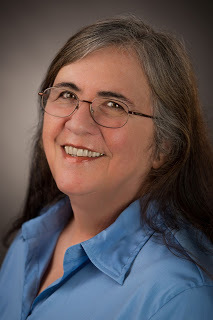
22. DESCRIBE YOUR PERFECT DAY.
My perfect day is writing from 8 till noon and then going for a walk in the Desert Botanical Garden. I enjoy birdwatching, though I’m not very good at it. The Southwest is a great place for birdwatchers because we get the Mexican migrants (of the feathered variety).
23. IF YOU WERE STUCK ON A DESERT ISLAND WITH ONE PERSON, WHO WOULD IT BE? WHY?
Well, my husband, of course. He’s compassionate, creative, and a pitch-in kinda guy.
24. WHAT WOULD YOU SAY IF YOU HAD THE CHANCE TO SPEAK TO WORLD LEADERS?
Give up all your armaments and help the starving feed themselves. Stop polluting our drinking water and get a grip on climate change.
25. WHAT ARE YOUR PLANS FOR THE FUTURE?
I’d like to write another book of historical fiction about the founding of the California missions by the Spanish. I’m almost done with a memoir, and I have another story collection that’s in the “almost done” category. As far as immediate plans, I’m taking my husband to Venice for a romantic getaway.
26. WHAT ARE YOUR VIEWS ON BOOK TRAILERS? DO THEY SELL BOOKS?
I don’t know if book trailers sell books or annoy readers. I’ve had trailers made for both my books, and I thought the young man who made them did a great job. A trailer should tell the potential reader if they’re buying a ticket for a wedding or a funeral. It’s up to the reader to decide which of the two might be the most amusing.
27. DO YOU SEE YOURSELF IN ANY OF YOUR CHARACTERS?
In a sense, giving birth to my characters is like giving birth to a child. The stories retain my DNA.
28. DOES THE PUBLISHING INDUSTRY FRUSTRATE YOU?
At this point it baffles me more than frustrates me. On the plus side, the emergence of print-on-demand publishing means that I can find publishers for my books. On the down side, these aren’t New York publishers, so it’s up to me to do promotion. That frustrates me because it’s a time sink, and I’d rather be writing.
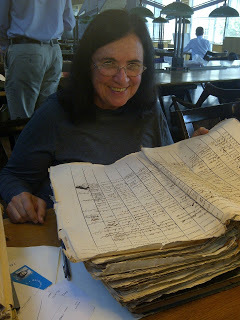
29. DID YOU EVER THINK OF QUITTING?
No. Never.
30. WHAT WAS YOUR FAVOURITE MANUSCRIPT TO WRITE? WHY?
I could say that my favorite manuscript is whatever I’m working on now; however, in actuality, I think my favorite is a short story in Bonds of Love & Blood. The story is called “The Ambassador of Foreign Affairs,” and it’s about elderly Mr. Tanaka, a low level bureaucrat who arrives in California on the eve of his daughter’s wedding. He learns she’s about to break off the engagement, and it’s up to him to make it happen. The small moments in that story make me laugh.
31. HOW WOULD YOU DEFINE ‘SUCCESS’ AS A WRITER.
Success is knowing that, for the most part, readers enjoy my books. That’s an even bigger kick than winning literary prizes, of which I’ve won many.
32. WHAT SHOULD READERS WALK AWAY FROM YOUR BOOKS KNOWING? HOW SHOULD THEY FEEL?
Since I don’t write how-to books, I’m not sure there’s anything they should “know.” As to how they should feel, I hope they feel that they have walked a mile in the shoes of someone totally unlike themselves. I hope my books and stories provide insight into what makes people tick.
33. WOULD YOU LIKE TO HAVE YOUR BOOKS MADE INTO MOVIES? EVER WRITTEN A SCREENPLAY?
Movies are not on my radar. I have thought about turning Montpelier Tomorrow into a play. It’s dialogue-heavy and would be easy to divide into scenes. As a play it would have a powerful impact on an audience.
34. HOW MUCH THOUGHT GOES INTO DESIGNING A BOOK COVER?
I’ve found a cover designer I really like. He goes by the moniker “tatlin,” and he’s at http://www.tatlin.net. He designed the cover for Bonds of Love & Blood, and it was a finalist for the Da Vinci Prize. No surprise. The designer’s Italian.
35. WHAT’S YOUR ULTIMATE DREAM?
I’m living my ultimate dream. I make careful choices about who I live with, where I live, and how I spend my time. I’m doing exactly what I want right now.
36. WRITING IS ONE THING. WHAT ABOUT MARKETING YOU, YOUR BOOKS AND YOUR BRAND? ANY THOUGHTS?
Gag!!! My brand! I know authors are increasingly urged to have a brand and a platform. I’ve dipped my toe in that water, and shrunk back from wading in too deep. Whatever I do or am, I’m pretty much myself.
37. ARE YOUR BOOKS SELF-PUBLISHED?
No. Both are published by independent presses. I have the skills to self-publish, however, and I’m thinking about doing that for my next book. I’d like to have control over the price, and I don’t have that control right now.
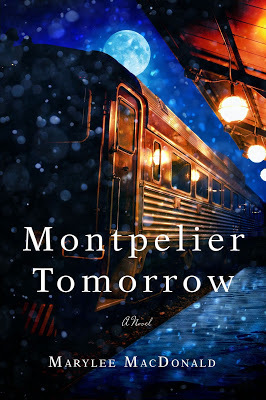
38. DESCRIBE YOURSELF IN FIVE WORDS.
passionate, humanitarian, creative, constructive, loyal
39. WHAT PISSES YOU OFF MOST?
How short life is.
40. WHAT IS THE TITLE OF THE LAST BOOK YOU READ? GOOD ONE?
The last good book I read is one that is also independently published. Marion Molteno’s Uncertain Light is just a terrific book. It’s one of those books I feel like shoving into the hands of all my friends and insisting they read. I’ve corresponded with Marion, and I know the book received a very warm reception in Australia.
41. WHAT WOULD BE THE VERY LAST SENTENCE YOU’D WRITE?
If Frank Sinatra hadn’t sung it, the sentence would be this: “I did it my way.”
42. WHAT WOULD MAKE YOU HAPPIER THAN YOU ARE NOW? CARE TO SHARE?
If my husband would work less, I would enjoy spending more time with him.
43. ANYTHING YOU’D LIKE TO ADD?
I’m a big fan of late-life writers. We have so much to write about and the perspective that comes with age.
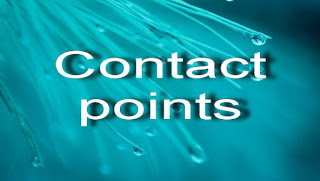
Author of Montpelier Tomorrow and Bonds of Love & Blood
Website: maryleemacdonaldauthor.com
Connect with me on Facebook, Twitter, Instagram, LinkedIn, and Goodreads
Book trailer for Bonds of Love & Blood
Book trailer for Montpelier Tomorrow
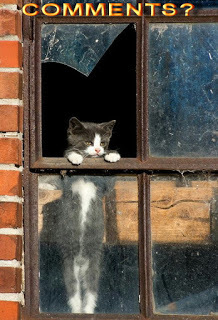
Clancy's comment: Thank you, Marylee. You deserve your success.
I'm ...

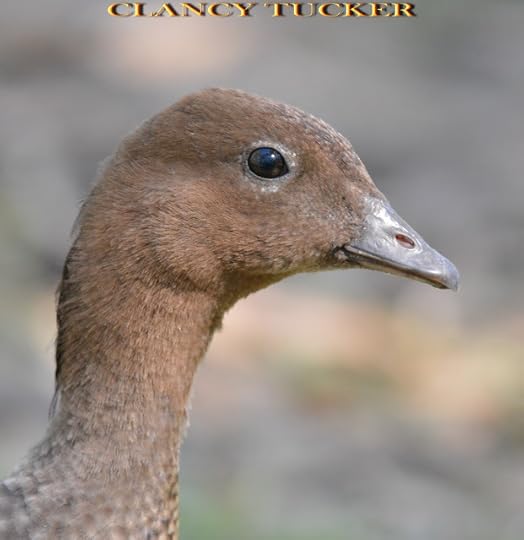
Published on March 02, 2017 12:53
March 1, 2017
2 March 2017 - COMPRISE vs. COMPOSE
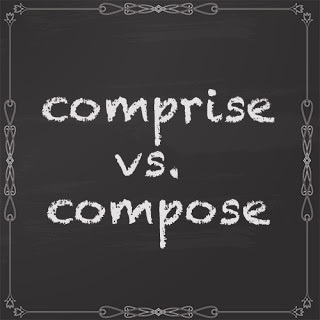
COMPRISE vs. COMPOSE
G'day folks,
Here are another two words that often trick us up.
The fundamental difference between comprise and compose has to do with the whole versus the parts of any object or concept. Let’s take a closer look at the definitions to put this in context: comprise is a verb that means “to include or contain” or “to consist of” as in The pie comprises 8 slices. Compose means “to be or constitute a part of element of” or “to make up or form the basis of,” as in Eight slices compose the pie. The key rule to remember is that the whole comprises the elements or parts, and the elements or parts compose the whole.
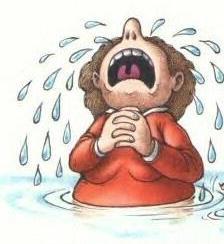
Their slippery meanings and similar sounds have likely contributed to the rise of “comprised of.” The argument against this phrase is rooted in the definitions outlined above. If we hold comprise strictly to the definition of “to include” or “to consist of,” then “comprised of” sounds awkward: The pie is included of 8 pieces sounds nonsensical, and, by that rule, so too does The pie is comprised of 8 pieces.
To keep writers in the clear, style guides advise avoiding this construction and opting instead for composed of, consisting of, or made up of. However, it is worth noting that “be comprised of” is recorded in dictionaries as synonymous with “be composed of,” and will generally get your point across satisfactorily in informal settings.

Clancy's comment: Mm ... Nothing simple about English.
I'm ...


Published on March 01, 2017 13:15
February 28, 2017
1 March 2017 - TOP QUOTES
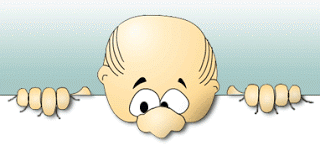
TOP QUOTES
G'day folks,
Time for some more great quotes to stir you up.
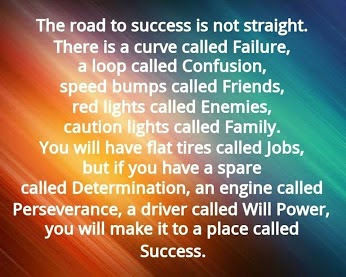
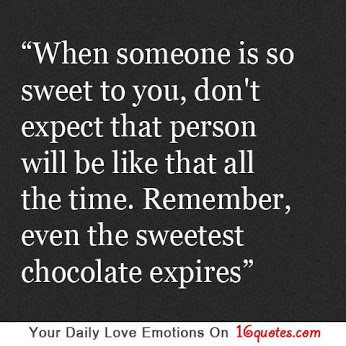

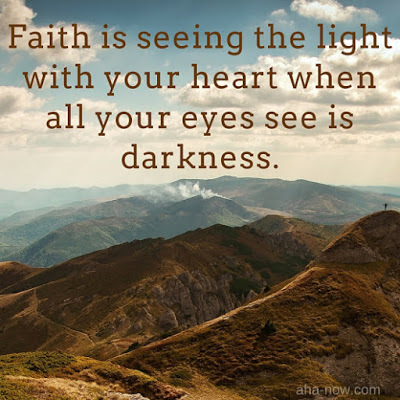
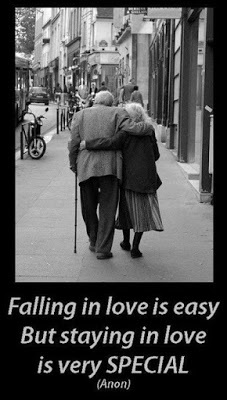
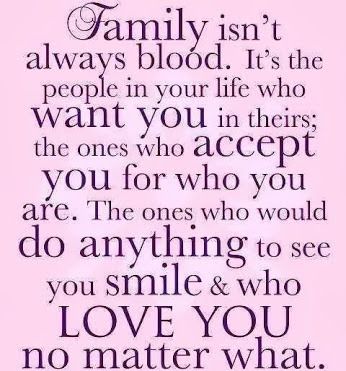
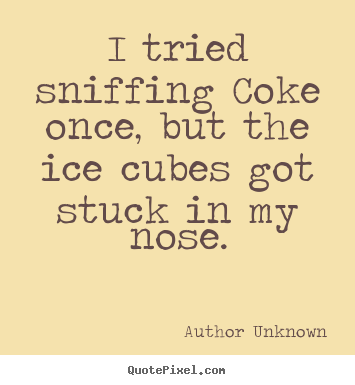
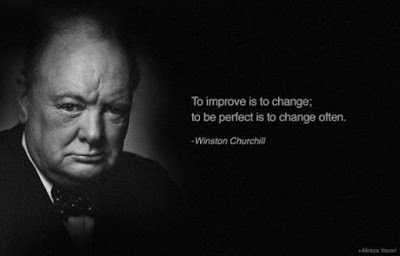
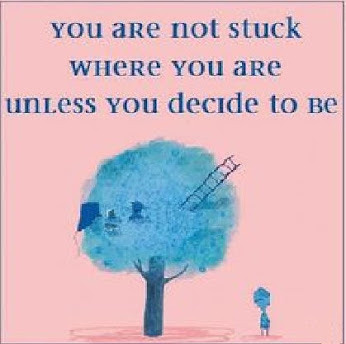

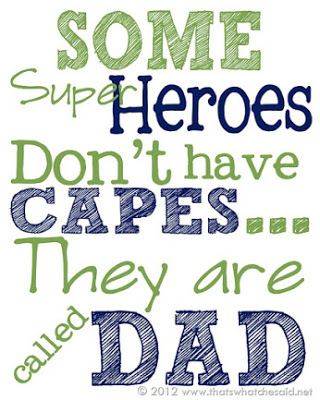

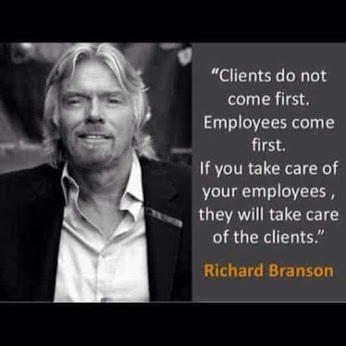
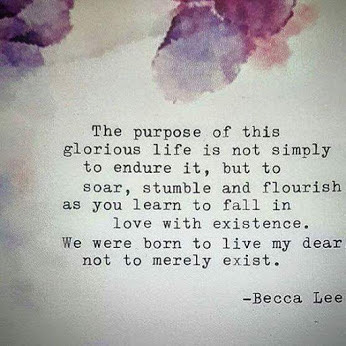
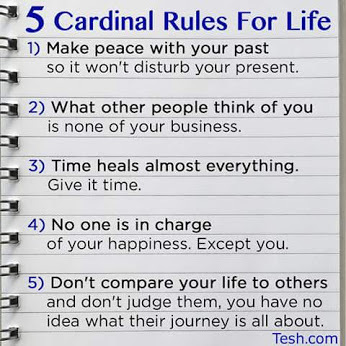
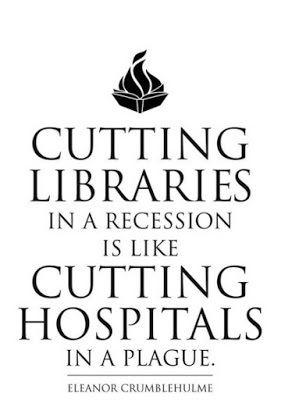
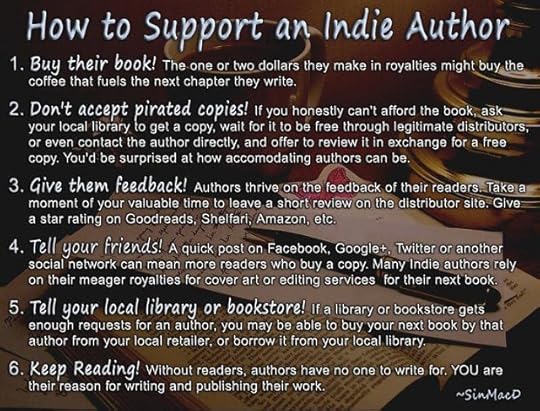
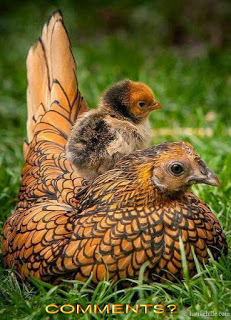
Clancy's comment: Yep, some beauties here, but the last one is spot on.I'm ...
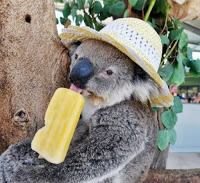

Published on February 28, 2017 12:37
February 27, 2017
28 February 2017 - OZZY OSBOURNE
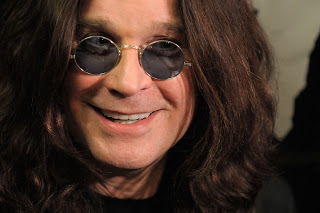
OZZY OSBOURNE
G'day folks,
John Michael "Ozzy" Osbourne is an English singer, songwriter, and actor. He rose to prominence in the early 1970s as the lead vocalist of the heavy metal band Black Sabbath, before embarking on a successful solo career. He later became a reality TV star with 'The Osbournes.'
“When I heard 'She Loves You,' my world went up like a shooting star. It was a divine experience. The planets changed. I used to fantasize that Paul McCartney would marry my sister.”
—Ozzy Osbourne
Born in Birmingham, England, in 1948, Ozzy Osbourne rose to fame as the frontman of the seminal heavy metal band Black Sabbath. In the late 1970s he embarked on a solo career, drawing attention for his outrageous public acts. Osbourne later earned a new legion of fans by starring with his family in the unlikely hit reality show, The Osbournes.
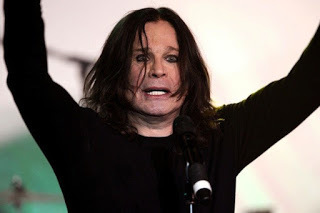
John Michael Osbourne was born into a working-class family in Birmingham, England, on December 3, 1948. The fourth of six children, he acquired the nickname Ozzy while in elementary school, where he struggled in his studies due in part to his dyslexia. These and other challenges led Osbourne to leave school at age 15, at which point he worked at a series of menial jobs, including one stint in a slaughterhouse. However, it was not long after this time that Osbourne embarked on a more lucrative career as well, committing a series of petty crimes that culminated with a brief prison sentence for burglary.
Throughout this turbulent period in his life, however, Osbourne nurtured a deep love for music, and shortly after his release from prison he took his life in a new direction, serving as the lead vocalist for several bands, before embarking on a new project with his friend, bass player Terrence “Geezer” Butler. After placing an ad in the newspaper, in 1968 Osbourne and Butler joined guitarist Tony Iommi and drummer Bill Ward to form the blues-inspired rock band Earth. While Earth earned some local notoriety, it wasn’t until the group began experimenting with the hard-driving, amplified sound that would later characterize the heavy metal genre, that they caught the attention of record producers. Since the band’s moniker was already in use by another group, they adopted the name Black Sabbath, a reference to the classic Boris Karloff film.
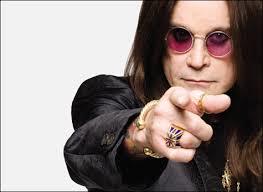
Master of RealityReleased by Vertigo Records in 1970, Black Sabbath's self-titled debut album was largely panned by critics but sold well in England and abroad. With standout tracks including the title song, “The Wizard” and “Evil Woman,” Black Sabbath reached the Top Ten in the U.K and No. 23 on the American album charts. The group’s sophomore effort, Paranoid (1971), included the seminal metal anthems "War Pigs," "Iron Man," “Fairies Wear Boots” and "Paranoid" and took Black Sabbath to new heights, topping the charts in the U.K. and reaching No. 12 in the U.S. and winning the band an even more devoted following.
The band's use of religious symbolism and mythic themes lent a gothic cast to their public personae. It also earned them constant criticism from right-wing groups, negative publicity that simply fueled the band's popularity with its fan base, mostly young males. As was the case with their first two albums, their subsequent efforts Master of Reality(1971), Vol. 4 (1972) and Sabbath Bloody Sabbath (1973) all found chart success, eventually achieving platinum status in the United States, based on the strength of such metal classics as “Sweet Leaf,” “After Forever,” “Snowblind” and “Sabbath Bloody Sabbath.”
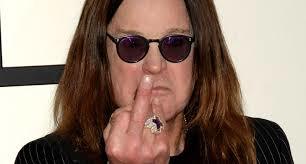
Snowblind
However, with the release of 1975’s Sabotage, the band’s fortunes began to change, and despite the strength of songs such as “Symptom of the Universe” and “Am I Going Insane,” the album failed to achieve the same status as its predecessors. Punctuating this shift, they were also forced to cut their subsequent tour short when Osbourne was injured in a motorcycle accident.
More than this, however, the band’s steady intake of drugs and alcohol—mostly by Osbourne—was further adding to the strain, while they watched their music lose favor to the burgeoning punk rock movement. Following the relatively unsuccessful releases Technical Ecstasy (1976) and Never Say Die (1978), Osbourne and his bandmates parted ways. Though Black Sabbath would carry on with various frontmen in the decades to come—including Ronnie James Dio, Dave Donato, Ian Gilliam, Glenn Hughes and Tony Martin—they would never reach the same heights that they did during the Ozzy era, when they wrote and recorded some of heavy metal’s, and indeed the era’s, most memorable songs.
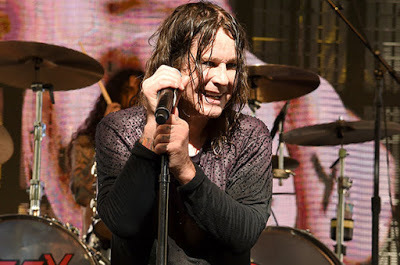
Crazy Train
Unlike some artists, who fade into obscurity after leaving the groups that made them famous, Osbourne's solo debut, Blizzard of Ozz (1980), was a resounding commercial success. Featuring the singles “Crazy Train” and “Mr. Crowley,” the album reached the Top Ten in the U.K. and reached No. 21 in the U.S., where it would eventually go multiplatinum. His 1981 follow-up, Diary of a Madman(1981) did equally well. The ensuing tour, however, was laden with misfortune, including a plane crash that killed guitar player Randy Rhoads and two other members of their entourage.
Throughout the 1980s, Osbourne continued to cultivate the image of the troubled loner and angry rebel, with his antisocial theatrics contributing to his public notoriety. Among his antics, he showered his audiences with raw meat and bit the head off a live bat onstage. But not everyone found his persona and dark music so amusing, and he was frequently singled out by religious conservatives who hoped to demonstrate the negative impacts of rock music on society. During this period Osbourne was also sued (unsuccessfully) several times by families claiming that his music was responsible for their children’s suicides.
Despite these and other challenges—including a 1986 stint in rehab—Osbourne continued to find musical success, with the albums Bark at the Moon (1983), The Ultimate Sin (1986) and No Rest for the Wicked (1988) all going multiplatinum in the U.S. He ushered in the 1990s with his sixth solo offering, No More Tears (1991), which reached the Top Ten in the U.S. and featured the hit single of the same name.
Ozzy and the Osbournes In 1992, Osbourne announced that the No More Tears tour would be his last. However, the popularity of the subsequently released double-live album, Live & Loud (1993), caused Osbourne to rethink his retirement, and the album’s version of "I Don't Want to Change the World" earned Osbourne his first Grammy Award. He returned to the studio for 1995’s Ozzmosis and the following year began to tour as part of a traveling metal festival, Ozzfest. However, Osbourne’s star was clearly on the wane, and he continued to struggle with the substance abuse problems that had plagued him his entire career.
In the new millennium, however, Osbourne would find his way back into the spotlight. In 2001 he released Down to Earth, which found chart success around the world, and the following year raised his celebrity status even further with his own bizarre brand of reality television. Premiering on MTV in early 2002, The Osbournes featured the domestic life of Osbourne and his clan and became an instant hit. The comic appeal of the aging headbanger completing such humdrum tasks as taking out the garbage charmed even those conservatives who had once vilified Osbourne. However, it did also take a more serious turn that summer, when Ozzy’s wife, Sharon, was diagnosed with colon cancer. The show lasted until 2005, earning a Primetime Emmy and becoming one of MTV’s all-time highest-rated shows.
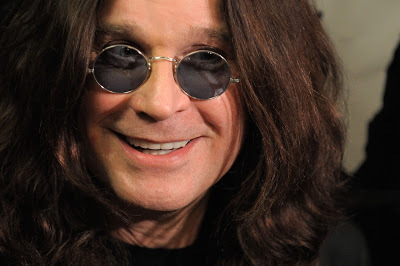
Iron Man
In 2005, Osbourne reunited with Black Sabbath for a tour, and the following year the legendary heavy metal heroes were inducted into the Rock and Roll Hall of Fame. At the induction ceremony, Metallica—one of countless groups for whom Black Sabbath was a primary influence—performed “Iron Man” in honor of the band.
Despite the years of abuse to his body, Osbourne has shown impressive staying power. After continuing to tour as part of Ozzfest for the next few years, he returned to the studio to record Black Rain (2007), which reached No. 3 spot on the U.S. charts. He followed with 2010’s Scream, which reached performed equally well, reaching No. 4 in the U.S. In 2012, Osbourne then reunited with his Sabbath bandmates to perform a series of concerts and to record a new studio album, 13, which was released in 2013. Topping the charts in the U.S., the U.K. and elsewhere, it was a testament to the high esteem in which Osbourne and Black Sabbath are still held around the world.
Going Through Changes
Ozzy Osbourne married his manager, Sharon, in 1982. They had three children together, Jack, Kelly and Aimee. Jack and Kelly appeared with their parents on The Osbournes, but Aimee demurred. Osbourne also has had three children from a previous marriage to Thelma Riley and now has several grandchildren as well.
However, in May 2016, Sharon and Ozzy announced their plans to divorce after 33 years of marriage. According to US Weekly, the split came after Sharon learned of Ozzy's alleged affair with a celebrity hair stylist. However, two months later the couple that had endured so many ups and downs together decided to try to make their relationship work. In July, Ozzy, appearing on Good Morning America with their son, Jack, said the marriage was not over. “It’s just a bump in the road,” he said. "It's back on track again.”On July 25, Sharon announced their reconciliation on her show The Talk. "It's been very hard . . . He's very embarrassed and ashamed about his conduct," she said. "I forgive, [but] it's going to take a long time to trust. But you know, we've been together for thirty-six years, thirty-four of marriage, and it's more than half of my life and I just can't think of my life without him . . . even though he is a dog!”

Clancy's comment: I only watched his television show once. That was enough. What a crazy mob of people.
I'm ...

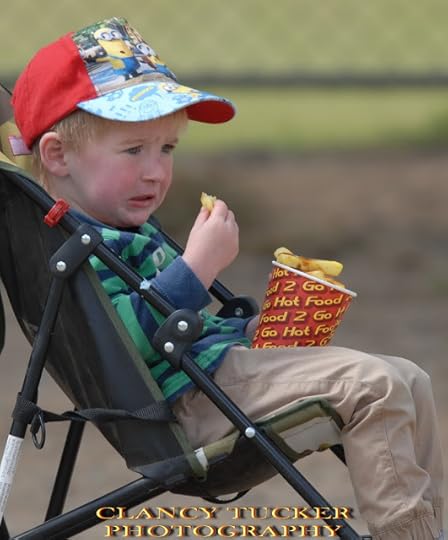
Published on February 27, 2017 12:35
February 26, 2017
27 February 2017 - THE BEAVER
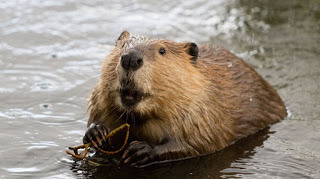
THE BEAVER
G'day folks,
Beavers are social animals, living in large family groups of monogamous parents, young kits, and the yearlings from the previous spring.
Amazing Facts About the BeaverBeavers use swimming goggles too! They possess a set of transparent eyelids which enable them to see under water.Beavers are second only to humans in their ability to manipulate their environment – the largest dam in existence is located in Wood Buffalo National Park, Alberta, Canada. It stretches for 850m, and is visible from space.Beaver homes, called lodges, are dome-like constructions built from branches and mud. They are positioned in open water for protection from predators and have underwater entrance holes.Beavers don’t mind the cold, they can be seen active throughout winter and maintain use of their ponds even when they are covered with a layer of ice.Beavers are one of the largest rodents on earth. Their large rodent teeth never stop growing. The beavers constantly gnawing on wood keeps their teeth from growing too long.There are two species of beaver; the North American beaver and the European beaver. Although very similar in appearance and behaviour, the two species are not genetically compatible.The work of beavers makes them a keystone species in maintaining habitats that are relied on by many others. As well as wetland, beavers create standing dead wood (by drowning some trees) which is inhabited by insects, and in turn attracts bird life.Beavers are good house guests. Their lodges typically contain two dens, one for drying off after entering the lodge under water, and a second, dryer den where the family will live and socialise.Beavers have been known to share their lodges with families of muskrats!A beaver will fell a particular tree for a particular reason; a larger mature tree will be felled to form the basis of a dam. A young, second growth tree will be felled for food. Beavers will also fell broad-leaved trees to encourage regrowth (food) more within their reach.Beavers use their broad, stiff tails like rudders to steer under water, and for balance while sitting on land. They also use their tails to slap the water as a warning of danger, or a warning to keep away.
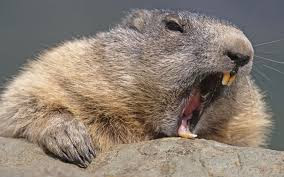
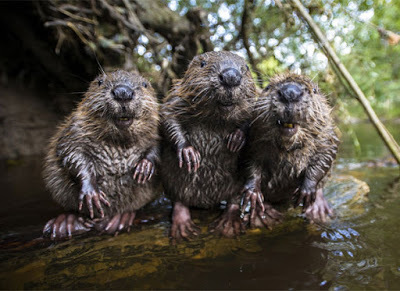
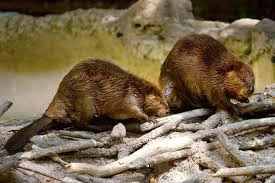
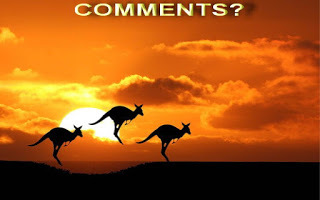
Clancy's comment: A very clever and cute species, but those teeth look fairly dangerous.
I'm ...


Published on February 26, 2017 14:04
February 25, 2017
26 February 2017 - ROLLING PICTURES

ROLLING PICTURES
G'day folks,
Brace yourself for some more stunning photography on the move.
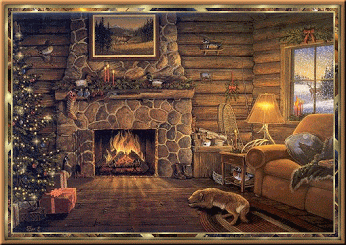
[image error]


[image error]

[image error]


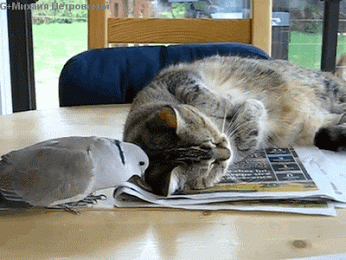
[image error]
[image error]

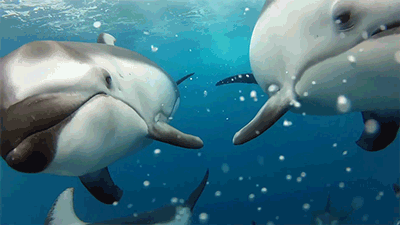
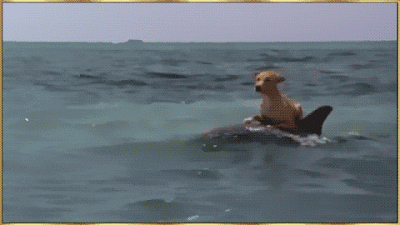
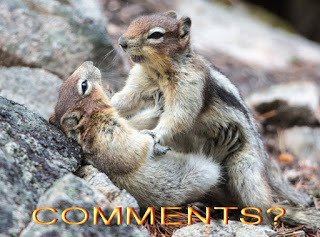
Clancy's comment: The cats and kittens always present well, eh?
I'm ...


Published on February 25, 2017 12:58
February 24, 2017
25 February 2017 - RON CARTER - Legend
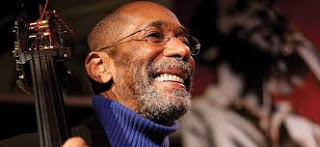
RON CARTER- Legend -
G'day folks,
Ron Carter is, bar none, the single most recorded bassist in music history. With more than 2000 (not a typo!!) album appearances under his belt, it is pretty difficult to imagine anybody ever touching Carter for prolificacy. Of course, in order to be invited to that many sessions, it goes without saying that his fluid, elegant, and perceptive bass lines have been virtually unequaled in the past 50 years.
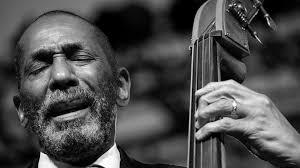
Born in Ferndale, Michigan, Carter began his musical development on the cello at the age of 10. Due to the barriers preventing African Americans from penetrating the world of classical music, he switched to the bass. Carter earned a bachelor’s degree from the Eastman School of Music and a master’s from the Manhattan School of Music, performing in their respective Philharmonic Orchestras. However, his extracurricular jazz activities thrust Carter into the middle of a burgeoning post-bop scene. Before he was even out of grad school, he was performing and recording with other future legends like Eric Dolphy (alto sax), Mal Waldron (piano), and Roy Haynes (drums).
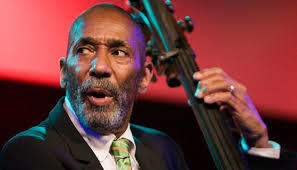
His next move would set the course of his career at a lightning pace. Joining with Miles Davis’s Second Great Quintet in the early ’60s, he spent the next decade redefining jazz alongside Herbie Hancock (piano), Wayne Shorter (sax), and Tony Williams (drums). His association with Davis pushed Carter into wildly experimental territory and led to a period of flirtation with the electric bass. Typically a stand-up player, he helped to define the fusion genre with his bandmates by grounding their space-funk exploration with his slippery-but-thick walking bass lines.
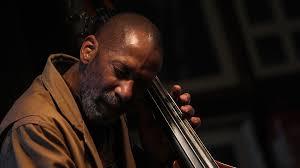
The ‘60s also earned Carter his reputation as among the most sought-after session players in circulation. During this decade, he lent his sonorous tone to records by Hancock, Freddie Hubbard (trumpet), Lee Morgan (trumpet), Horace Silver (piano), George Benson (guitar), Chico Hamilton (drums), and countless others. In the ‘70s, he emerged as a respected bandleader in his own right, fronting various combos comprised of the scene’s greatest musicians. He would become an important exponent of the Third Stream movement, which blurs the lines between jazz and classical music, as well.
Through the next two decades, Carter was essentially the house bassist for the great CTI Records. During the label’s period of maximum importance, Carter sat in on innumerable sessions for jazzers like Stanley Turrentine (sax), Kenny Burrell (guitar), Paul Desmond (alto sax), Milt Jackson (vibes), Herbie Mann (flute), and pretty much everybody else of any importance to recorded jazz at the time.
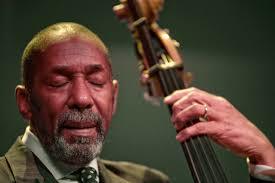
In the ’90s and ’00s, Carter showed no signs of slowing, even basking in the appreciation of musicians outside the jazz bubble. Hip hop pioneers, A Tribe Called Quest, tapped Carter for a guest appearance on their now-classic The Low End Theory (1991), even as Carter continued to release his own work at a pace of roughly an album a year. Ron Carter is a member of the Down Beat Jazz Hall of Fame, a Distinguished Professor Emeritus at the City College of New York, and (unless anybody out there can think of another candidate) likely the most-recorded musician alive today.

Clancy's comment: A true legend.
I'm ...


Published on February 24, 2017 12:59
February 23, 2017
24 February 2017 - Is it 'Just Deserts' or 'Just Desserts'?

Is it Just Deserts or Just Desserts? G'day folks,Here is another tricky expression.
These two terms, though only one letter apart and pronounced identically, have different etymologies. The particular sense of desert that appears in just deserts ultimately derives from the Old French verb deservirmeaning “to deserve,” and has been around in English since the late 1200s. Dictionary.com defines desertas “reward or punishment that is deserved.” The idiom get/receive one’s just desertsmeans “to be punished or rewarded in a manner appropriate to one’s actions or behavior.” The expression justdeserts, often following the words “get one’s,” “have one’s,” “receive one’s,” or “meet with one’s” has been used in English since the 1300s, and is still popular today.


Dessert with the double s ultimately derives from the French desservirmeaning “to clear the table.” Dictionary.com defines dessert as “cake, pie, fruit, pudding, ice cream, etc., served as the final course of meal.” While it is certainly true that a meal of cake, and cake alone, could be called “just desserts,” this is not the spelling or meaning of the phrase that has been around in English since the late 1300s. Next time you’re talking about someone’s comeuppancemake sure you use just desertswith one s.
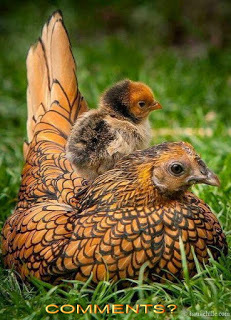
Clancy's comment: Mm ... So many things to remember, eh?
I'm ...

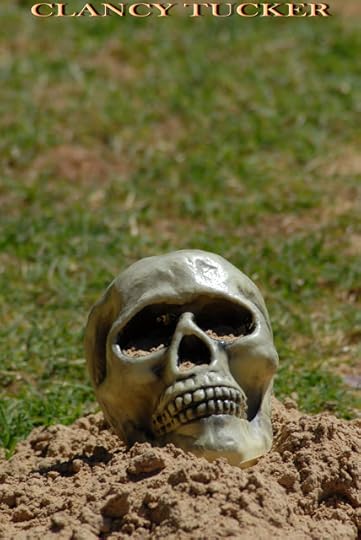
Published on February 23, 2017 13:02
February 22, 2017
23 February 2017 - 'BOLD JOURNEY' - GREAT REVIEW
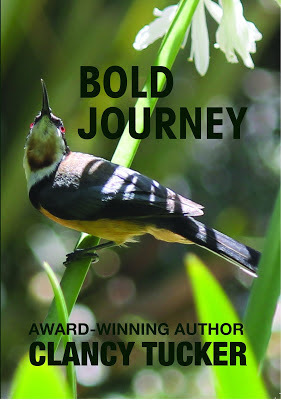
'BOLD JOURNEY'- GREAT REVIEW -
G'day folks,
I've probably mentioned previously that my first book, 'Gunnedah Hero', will soon be a movie, produced and directed by Australian film maker, John Campbell. John has been a fan of all my books, and he has just read and reviewed my latest. Here are his comments ...
"I have read all of Clancy's books to date, and enjoyed every one of them. This, his latest publication, 'Bold Journey', is no exception. As an evening reader, I do lose far too much sleep reading his books. I always find myself wanting to read just one more chapter. Fatal; five chapters later, out come the matchsticks to 'prop up the eyelids'.
Truly an author who keeps you on the edge of your seat. You never know what shock he has in store for you on the very next page. So it was with 'Bold Journey'. Having read the back cover, I couldn't wait to get a copy myself, and find out more. I was not disappointed.
Clancy is a skilled artist with words, and he taught me the technique of writing brief and to the point sentences in my film scripts. His descriptive narrative immediately draws you deep into the story from the very first paragraph.
It was at dinner one evening, in their little Italian Village of Santorini, that Severino Angelli proposes to his family that they pack up and emigrate. "Where", gasped his startled wife, Anna Maria; "Australia!". Soon the Angelli family find themselves aboard the 'Achille Lauro' destined for a brand new life on the other side of the world. Waving goodbye to their relatives and friends, and severing his fond attachment with each of his brothers, Severino suddenly realizes the impact of his decision.
Life aboard ship soon dispels the initial shock, as the Angellis befriend the Ginellis, another migrating family, with whom they are to forge a close friendship for many years. Severino's son, "Fozzie" and 'Cat' Ginelli instantly become inseparable friends aboard ship.
Later, Cat and Fozzie go their separate ways, embracing very different careers in their new country, but each possessing a compassionate feeling for others. Much later, they do meet again, but under the most unexpected circumstances.
Cat is a nurse, working with the starving and dying masses in Ethiopia, caught in an impossible quest; Fozzie, a successful journalist, feels drawn to investigate their plight. Back in London, a severe, life threatening illness, brings Cat to the bedside of an unconscious Fozzie. Do they ever come together again?
I love the way Clancy weaves into his stories, the most complex and unexpected outcomes. All the usual joys and tragedies in life, beset his characters, but I recall in each of his works, he builds a passionate and lovable nature into many of his youngsters.
Some friends tell me that they feel Clancy writes his stories for young readers. Whilst heroically featuring the outstanding lives of some of the children and young teenagers in his scripts, he enthralls adults of all ages, and keeps everyone poised right to the very end.
So, 'Bold Journey'. A slow, but probably necessary beginning, steeped in the historical detail of a city I know well. I loved it and give it an A1. rating, Clancy. As you say, it would make a great movie. I agree!
John Campbell. Film Director, Victoria, Australia."
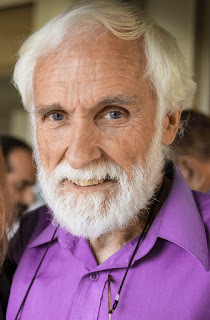
John Campbell
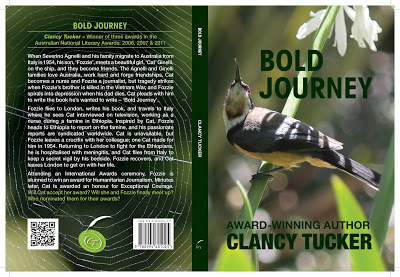
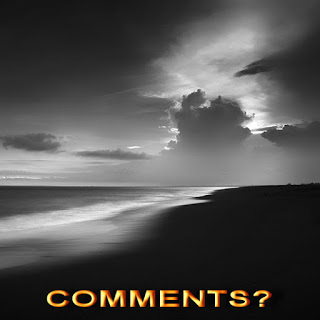
Clancy's comment: Thanks, John. Much appreciated. So, folks, if this review has whet your appetite and made you curious, head up to the top right-hand side of this page and purchase a copy of Bold Journey - paperback or E-book. In regard to the movie, Gunnedah Hero, I will say more about that in the coming weeks.
I'm ....
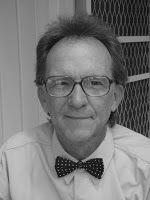

Published on February 22, 2017 11:56
February 21, 2017
22 February 2017 - LANA WACHOWSKI
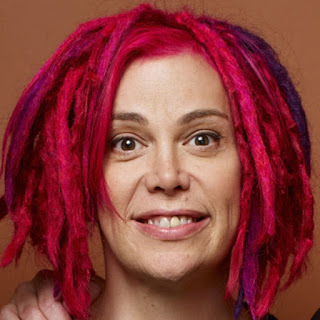
LANA WACHOWKSI
G'day folks,
Lana Wachowski, along with sibling Lilly, is a producer, director and screenwriter known for 'The Matrix' film trilogy, 'V for Vendetta,' 'Cloud Atlas' and 'Sense8.'
“In a way all, of our movies are about interconnectivity and about truth beneath the surface ... a constant theme is the transformational and transcendental power of love.”
—Lana Wachowski
Born on June 21, 1965, in Chicago, Illinois, Lana Wachowski grew up as Laurence Wachowski with younger sibling Lilly. The two entered filmmaking as screenwriters and directed 1996's Bound before going on to helm the ground-breaking Matrix trilogy. They later produced V for Vendetta and directed the films Speed Racer and Cloud Atlas as well as helming the Netflix series Sense8. Lana has also become a lauded spokesperson for transgender rights.
Lana Wachowski was born on June 21, 1965, to parents Lynne and Ron Wachowski. Lana grew up as Laurence Wachowski (also known as Larry Wachowski) in Chicago, Illinois, with younger sibling Andy. Though biologically male, as a child Larry also identified with girls, existing between both genders and later struggling with depression and suicidal ideation due to great social stigma.
Wachowski attended Whiney M. Young Magnet High School, taking on TV and theater programs, before going on to Bard College. She eventually dropped out to work for a time as a carpenter with her sibling back in their home city. The two were also consummate devotees of fantasy fiction and comic books, and wrote for a Marvel Comics imprint series, Ectokid.
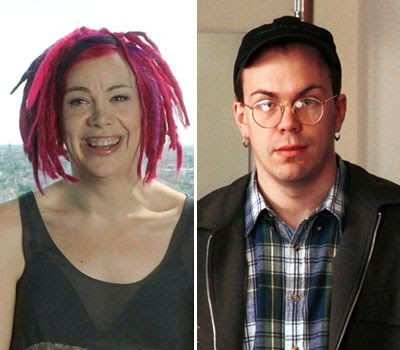
The Wachowskis started working in Hollywood with producer Joel Silver by penning a script for the Sylvester Stallone and Antonio Banderas action flick Assassins (1995). They were then given directing and screenwriting duties for the sultry, women-centered heist film Bound (1996), starring Gina Gershon and Jennifer Tilly.
The siblings ended up directing and co-writing a ground-breaking work that explored existential philosophies in a dynamic storyline: The Matrix. The 1999 film, starring Keanu Reeves, Laurence Fishburne and Carrie-Anne Moss, had a story that scrutinized the virtual world of a future era and revolutionized the interplay of action choreography and CGI effects. The movie grossed more than $460 million worldwide and was followed by two 2003 sequels, The Matrix Reloaded and The Matrix Revolutions. Though enjoying huge success, the siblings decided to maintain their privacy.
The Wachowskis returned to the comic world for their next project, producing and writing the 2006 film adaptation of the Alan Moore graphic novel V for Vendetta. The movie, directed by James McTeigue, starred Hugo Weaving and Natalie Portman as characters in a dystopic England undergoing revolution as sparked by a masked figure.
In 2008, the siblings produced, directed and co-wrote a kaleidoscopic adaptation of the 1960s animated series Speed Racer. The two returned to working as producers with McTeigue for 2009's Ninja Assassin.
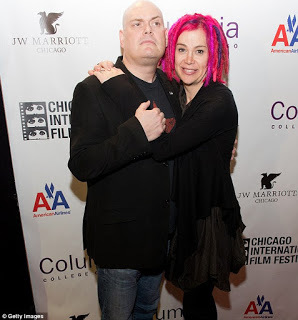
2012 was a momentous year for the Wachowskis. In late October, they released their adaptation of the David Mitchell novel Cloud Atlas, which they co-directed with German filmmaker Tom Tykwer, and which features Halle Berry and Tom Hanks.
Also in 2012, Lana began making public statements about her experience as a transgender person. Openly living as a woman since 2000, she talked about her outlook on gender during promotions for Atlas and in an eloquent gala speech for the Human Rights Campaign. She received HRC's Visibility Award in 2012.
In February 2015, the Wachowskis released their next film, Jupiter Ascending, a space opera starring Mila Kunis, Channing Tatum and Eddie Redmayne. Though offering majestic visuals, the movie was panned by critics and opened to moderate box office attendance. Later in the year the duo released the better received Netflix series Sense8, following a group of individuals across the globe who are supernaturally connected.
In March 2016, Lana's sibling Andy came out as transgender as well, announcing her name to be Lilly in a public statement released by the Windy City Times.
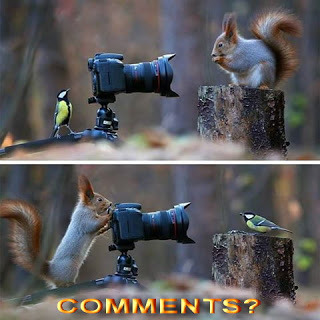
Clancy's comment:Mm ... Your sexuality has nothing to do with your talent.
I'm ...


Published on February 21, 2017 12:42



